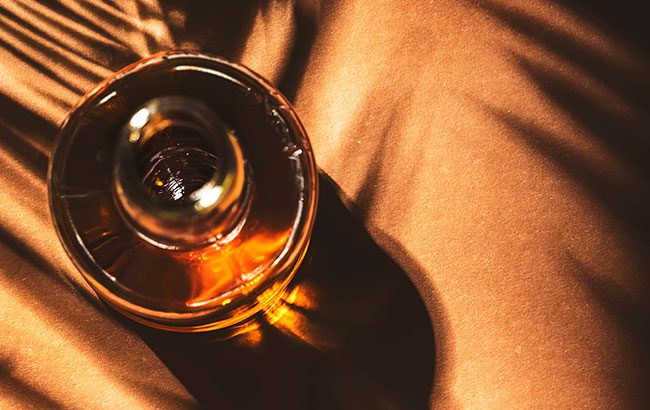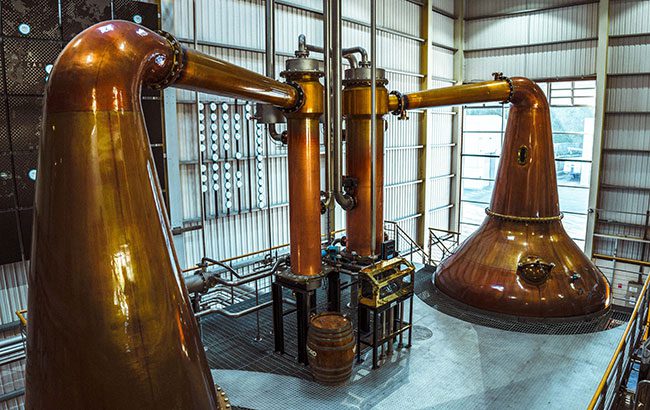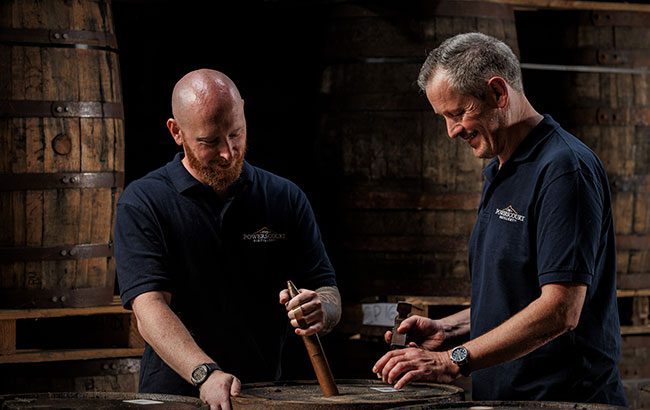Irish whiskey takes on Scotch in the US
The increasingly popular Irish whiskey category is giving Scotch a good run for its money in the US, and brands are gearing up to attract more consumers with innovative products.

*This feature was originally published in the September 2022 edition of The Spirits Business magazine.
If you put pre-mixed cocktails to one side, Irish whiskey was the second fastest-growing spirit category in the US last year after Tequila/mezcal. Having slowed in 2020, it leapt forward by 17.8% to 5.9 million cases, according to the Distilled Spirits Council of the US.
As the Irish Times gleefully reported in June, the increase “was greater than the cumulative growth experienced by Scotch over the past 10 years”. If the trend continues, the spirit is set to eclipse its age-old rival across the Irish Sea in its biggest market within a decade.
Jack Teeling, co-founder of Dublin’s Teeling Distillery, insists the boom in Irish whiskey is no overnight success. “It’s been growing consistently from the 1990s, and is obviously playing a huge catch-up on decades of underperformance,” he says. “We set up the company in 2012, and the category has basically doubled since then. The IWSR shows it had a massive bounceback in 2021 with volumes now up at 14m cases.
“But from a global perspective that’s still very small. The roadmap for continued growth is there, and from my perspective, the opportunity is as big, if not bigger, for the premium end of the market.” With this in mind, there are plans to double production at Teeling Distillery over the next five years.
Smashing a barrier
Yet it will still remain a minnow beside Jameson, which in March smashed the 10m-case barrier, according to international marketing director Simon Fay. It now lies fourth behind Johnnie Walker, Jack Daniel’s and Jim Beam in the global premium whisky stakes, and aims to go much further. The target is to hit 15m cases by 2030, with Jameson Original accounting for at least 80% of that, and Jameson Black Barrel at 10%.
Jameson is now Pernod Ricard’s biggest brand in the US, selling 2m cases in the first six months of its current fiscal year. “Over the past 10 to 15 years we’ve been trying to accelerate our growth in the rest of the world, and be a little less reliant on the US market,” says Fay. “But to be very honest, it continues to accelerate, so we’re trying to catch up all the time.”
Not all the category’s news has been good, however. A year ago, the Irish Whiskey Association declared Russia as the second-biggest market, on 7.3m bottles in 2019, having surged past the UK, France, South Africa, and Ireland itself. The top three brands – Jameson, Tullamore Dew and Bushmills, which collectively have an 83% global share – have been supported by bottled-in-Russia Irish blends with names like Shamrose. Most of them were bulk shipped from Ireland’s go-to source of unbranded whiskey – the Great Northern distillery in Dundalk, set up in 2015 by Jack Teeling’s father, John Teeling.
Three years later, MMA fighter Conor McGregor was in Moscow to promote his Proper No. Twelve brand, and for the Fifa World Cup, as a personal guest of president Putin – “one of the greatest leaders of our time”, he tweeted in thanks. Since then, Putin’s invasion of Ukraine has brought Russian sales of Irish whiskey to a shuddering halt. Jameson has been “working to accelerate markets in Africa, specifically Nigeria, and Asia, specifically India, Korea and Japan,” says Fay. “But we’ve got a lot of loyal consumers in Russia and Ukraine, and like everyone we hope the situation can be resolved and we can get back to business.”

Meanwhile, fuel and grain prices have been sent soaring by the war in Ukraine. “This time last year, barley was about €250 (US$250) a tonne,” says Neil Conway, head brewer at Waterford distillery. “This year you’re looking at about €400, at current pricing.”
Waterford was set up by Mark Reynier six years ago in a former Guinness brewery, and like Great Northern has always insisted on using Irish barley. And not just that, the crop from each individual farm is kept separate and distilled in batches to preserve its particular terroir. Waterford has put these out as single-farm bottlings. and blended them into ‘cuvées’, and is about to release its Arcadian series distilled from organic, biodynamic, and heritage varieties of barley.
“I think some of our customers were a little confused at the beginning,” admits Conway. “And we launched during the pandemic so we couldn’t get our brand out to the hotels, where we really wanted it to be.”
At the start, he says: “Ireland was very much our biggest market, but as the world has opened up post-Covid we have seen a big shift towards global markets. The UK has been a bit difficult with Brexit, but that’s another story.”
He lists Waterford’s top three markets as France, Germany and Canada, and says the aim is to target “wine drinkers open to converting to whisky”. Being double-distilled like single malt Scotch, Waterford prefers its whisky to be spelled without an ‘e’.
Local sourcing
Some 50 miles west, Peter Mulryan is preparing to launch his first whiskey from Blackwater distillery. While costs have obviously spiralled, he is happy that his grain is locally sourced. “If you were relying on cheap, imported grain, you were kind of stuffed,” he says. “So it impacted us smaller producers less than the big guys. Getting stock in will be an issue for them, but not for us. We haven’t got massive tankers sitting in Cork harbour. We’ve got a man with a tractor up the road.”
Blackwater’s whiskeys were inspired by recipes of old mash bills, and Mulryan and his team have decided to initially come out with a set of four. “It’ll be called the Manifesto, and will allow us to tell consumers what we’re about,” he explains.
Where it will be launched is yet to be decided, but it won’t be the US because “to be honest, there are much easier wins closer to home”.

Teeling sympathises, and says: “The US is obviously a very attractive market if you look at the macro figures, but delving in you start to realise its structural challenges. You might think you’re in the largest wholesaler in every state, and then you realise that the wholesalers are heavily incentivised to promote and push the big brands. That’s how the sales guys get paid, and you’re just one line in the phonebook of different offerings. The challenge now, because there are 700 different brands of Irish whiskey, is that everyone is trying to get in, and a lot of the options are already taken.”
John Cashman, head of whiskey at Powerscourt, in the Wicklow Mountains, nods in agreement. “We’ve taken the decision not to go near the US,” he says of plans to launch the distillery’s Fercullen Falls whiskey in September. The Fercullen brand was established from old stocks inherited by the former master distiller, Noel Sweeney. The new expression from casks laid down at the distillery over the past four years will have a fresh look, though a similar style – “very green-fruit forward, and delicate”, says Cashman.
Caroline Gardiner, head of marketing, adds: “We’re very excited. It won’t be easy, but we do feel we’ve attained the right mix for the audience we’re hoping to talk to. We’re launching in Ireland, because we want to win at home first.”
Taking Irish whiskey beyond the US and beyond Jameson could be the next phase for the category. Teeling says: “We are now seeing proper Irish whiskey displays in continental Europe, in cavistes, and in US liquor stores and back bars.”
Not that Jameson plans to miss out, as it strives to hit its 2030 target. If a rising tide lifts all boats, Irish whiskey could break the 20m-case barrier before the decade is out.
Related news
Cocktail stories: Speed Bump, Byrdi
